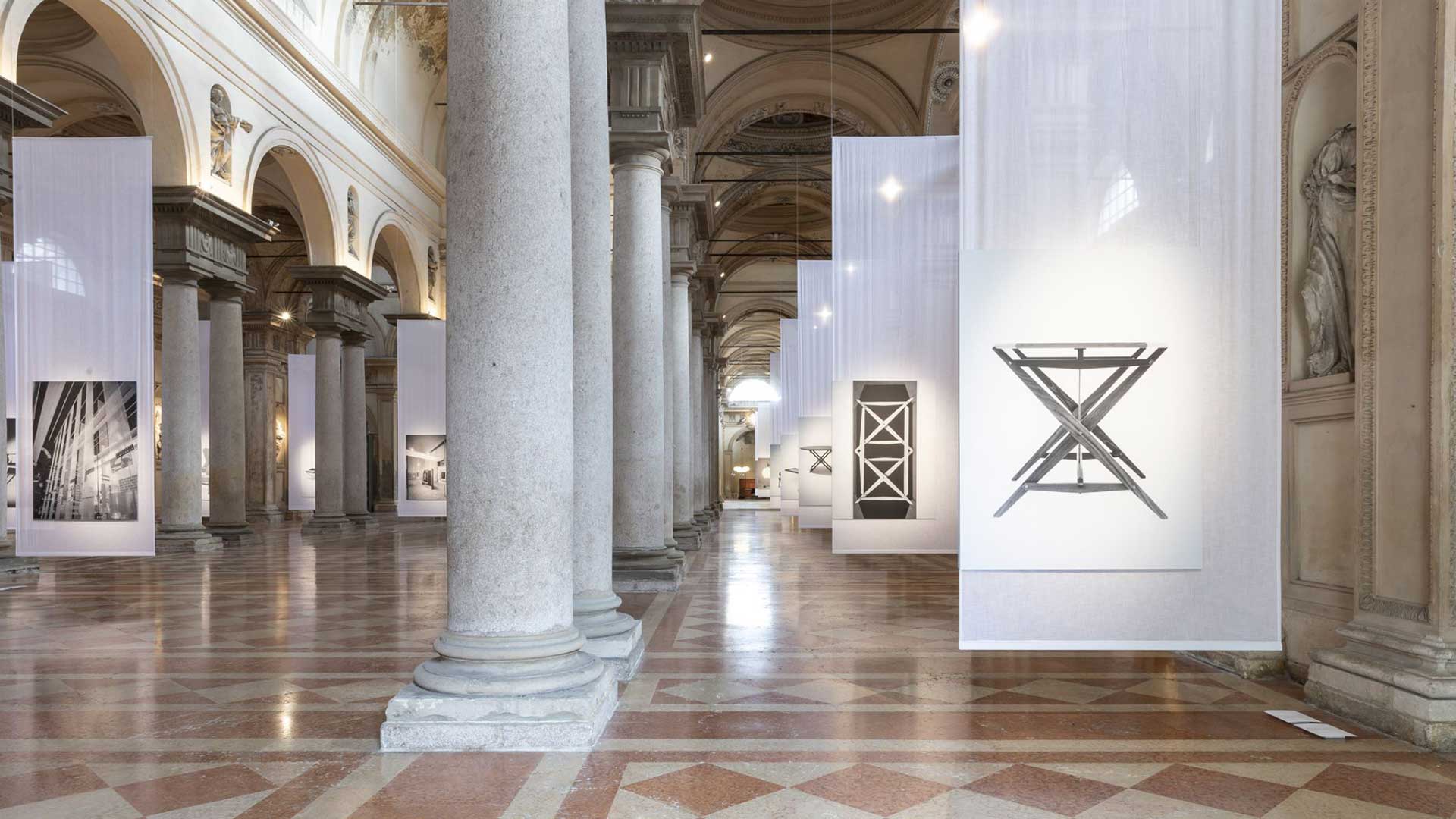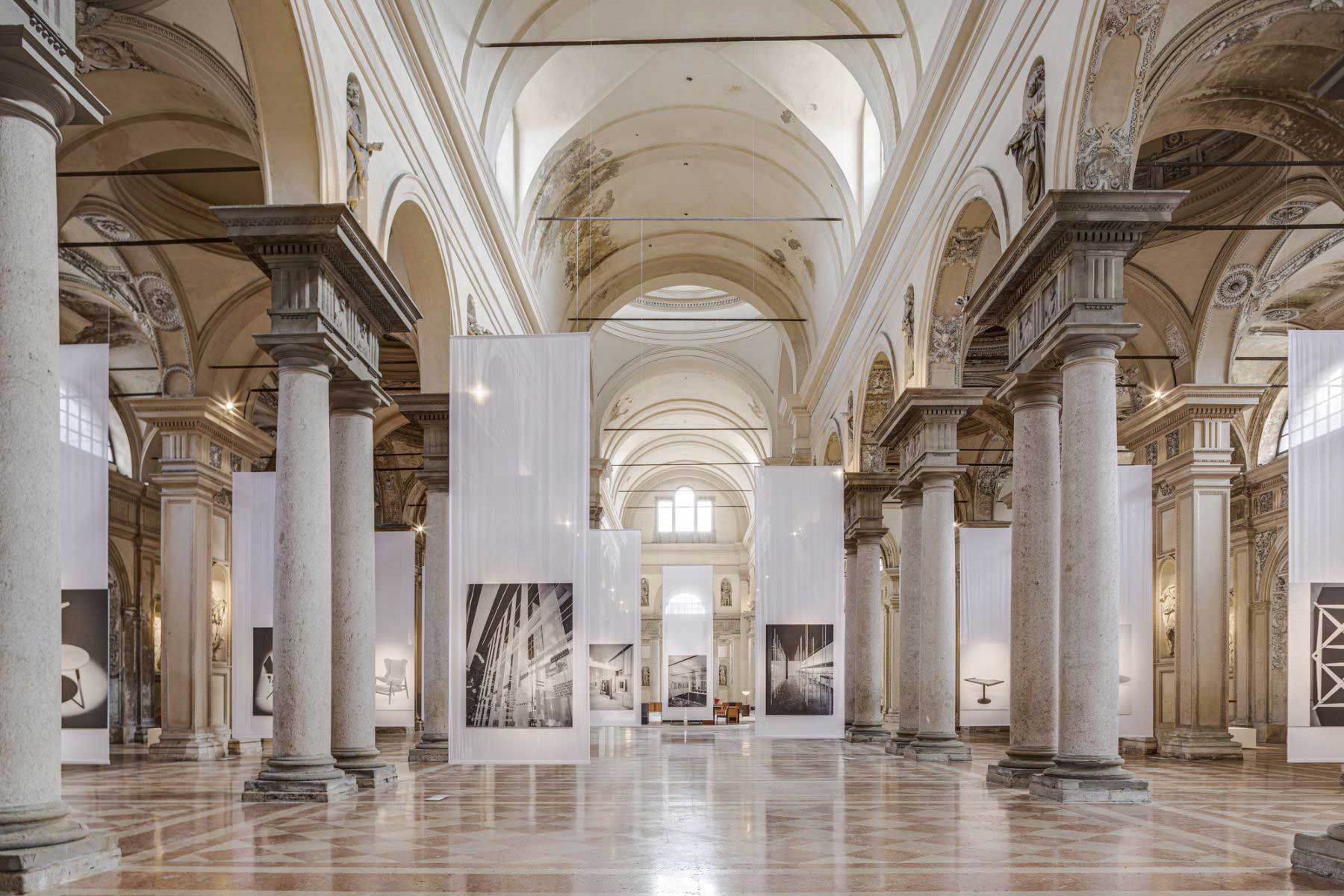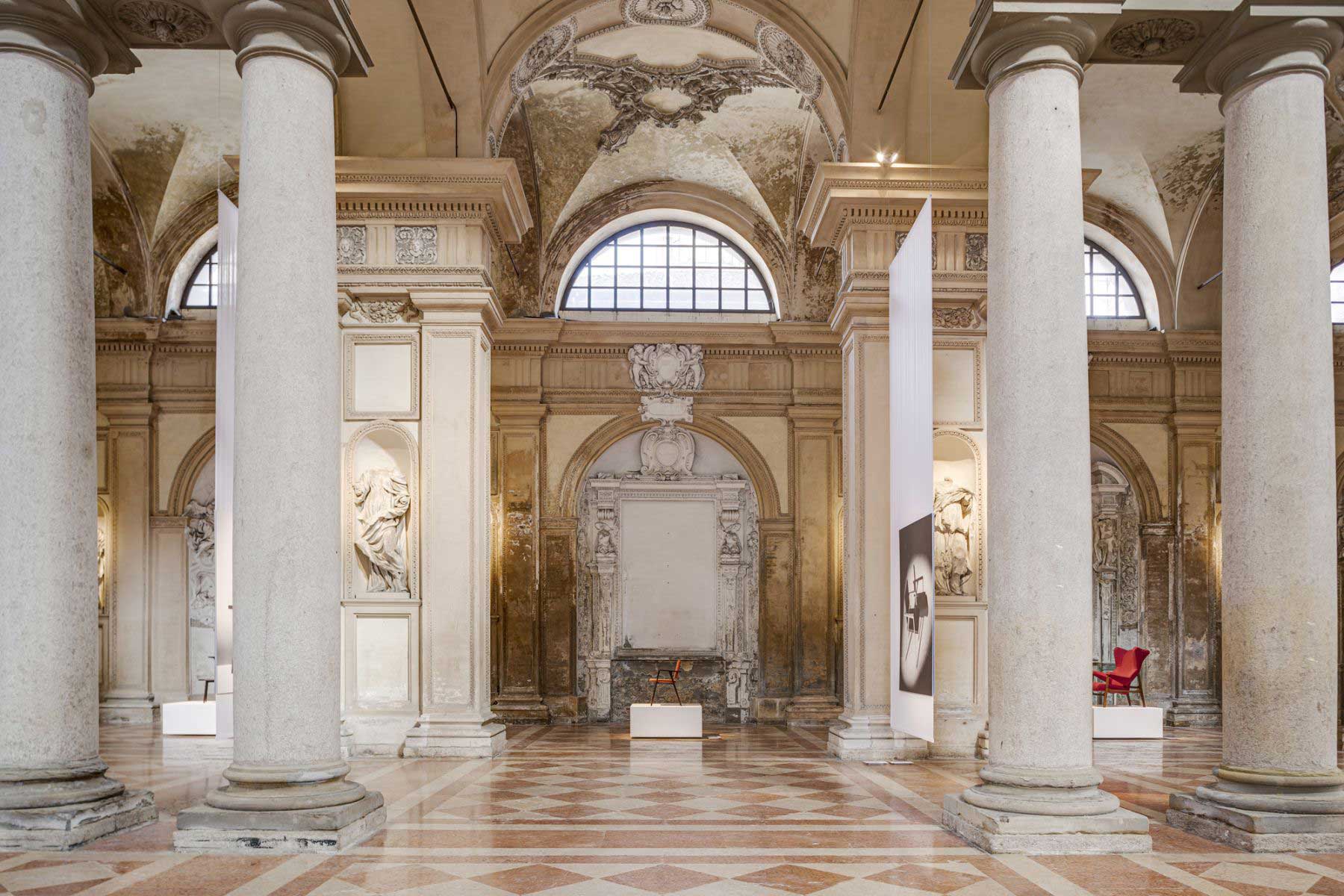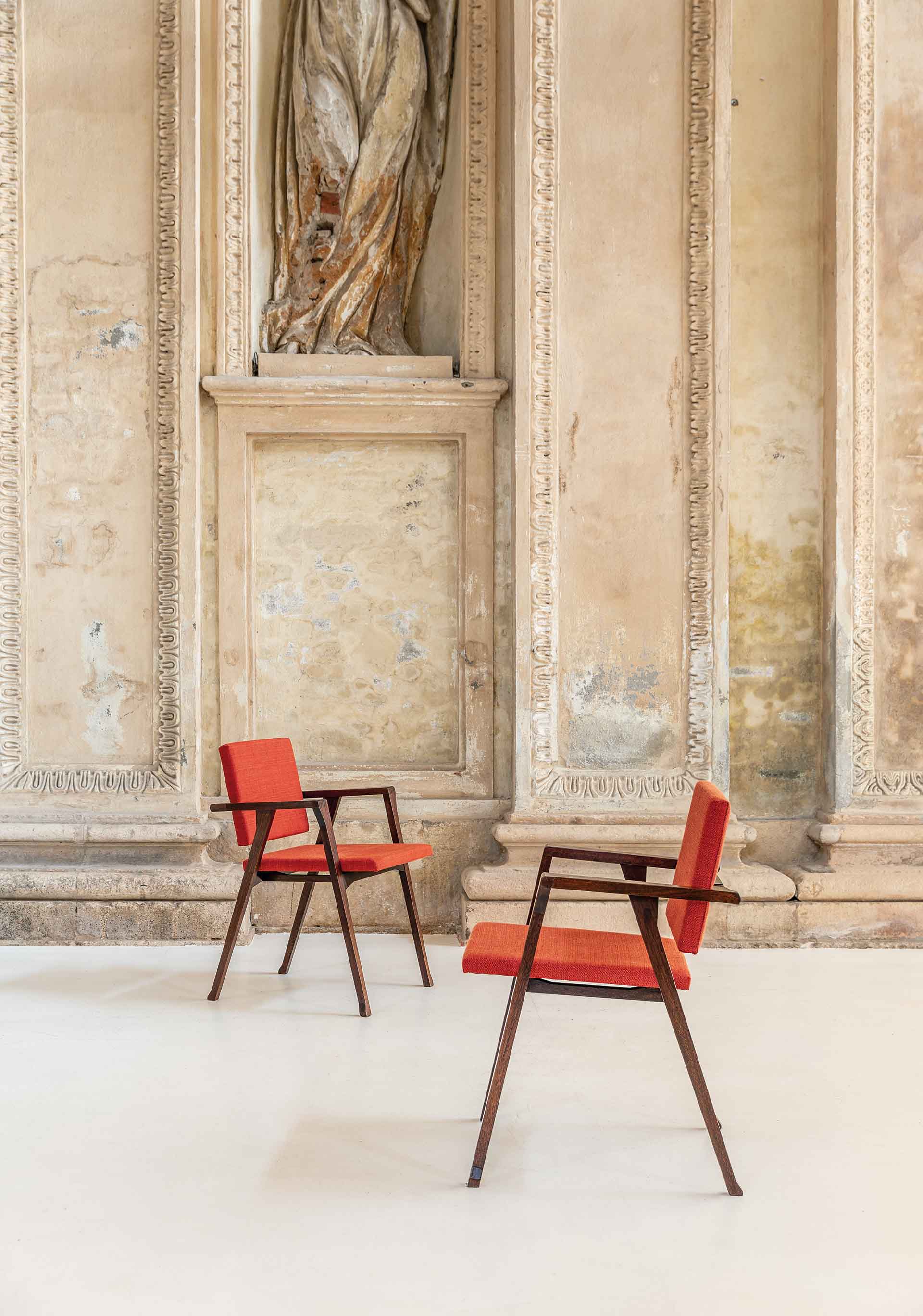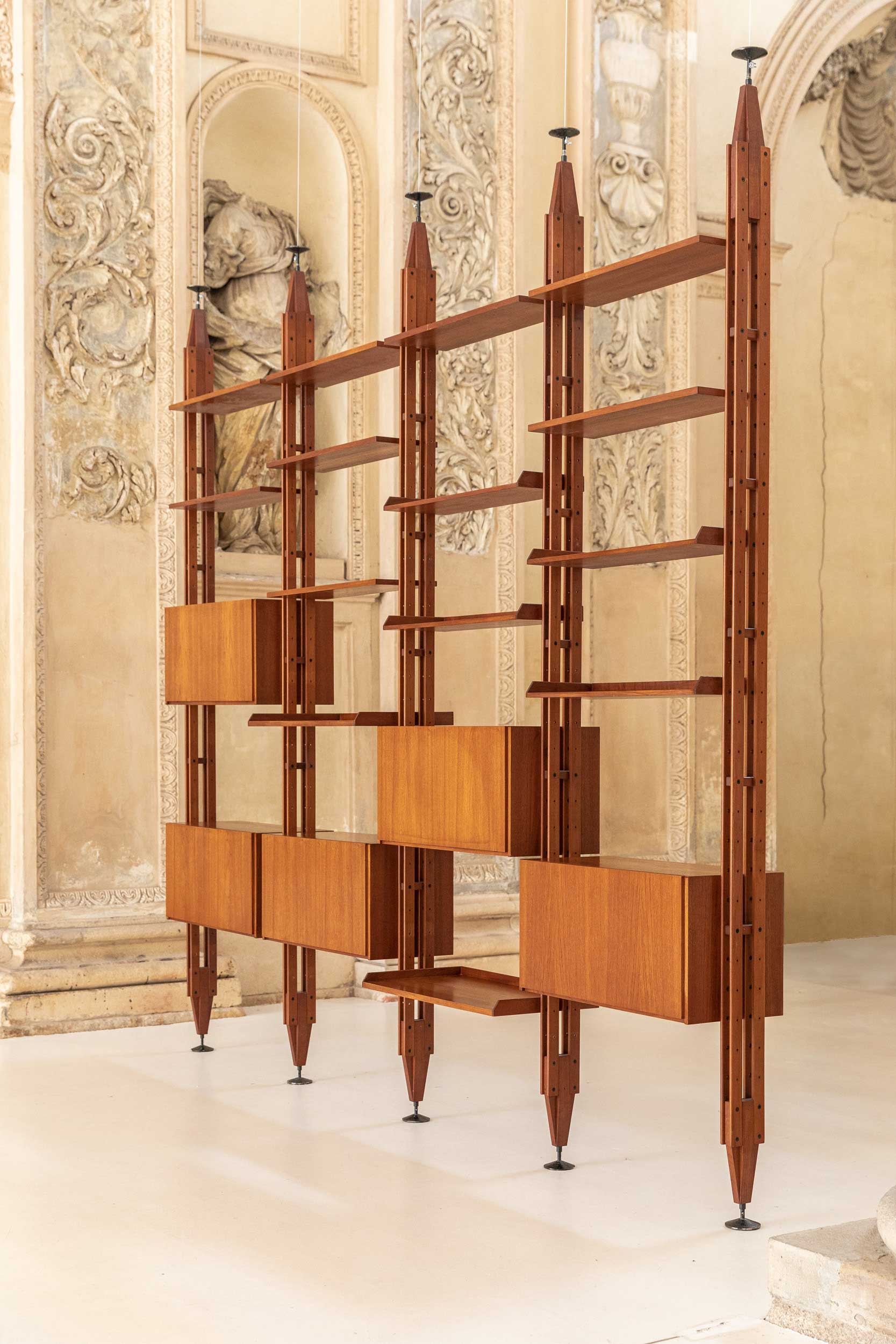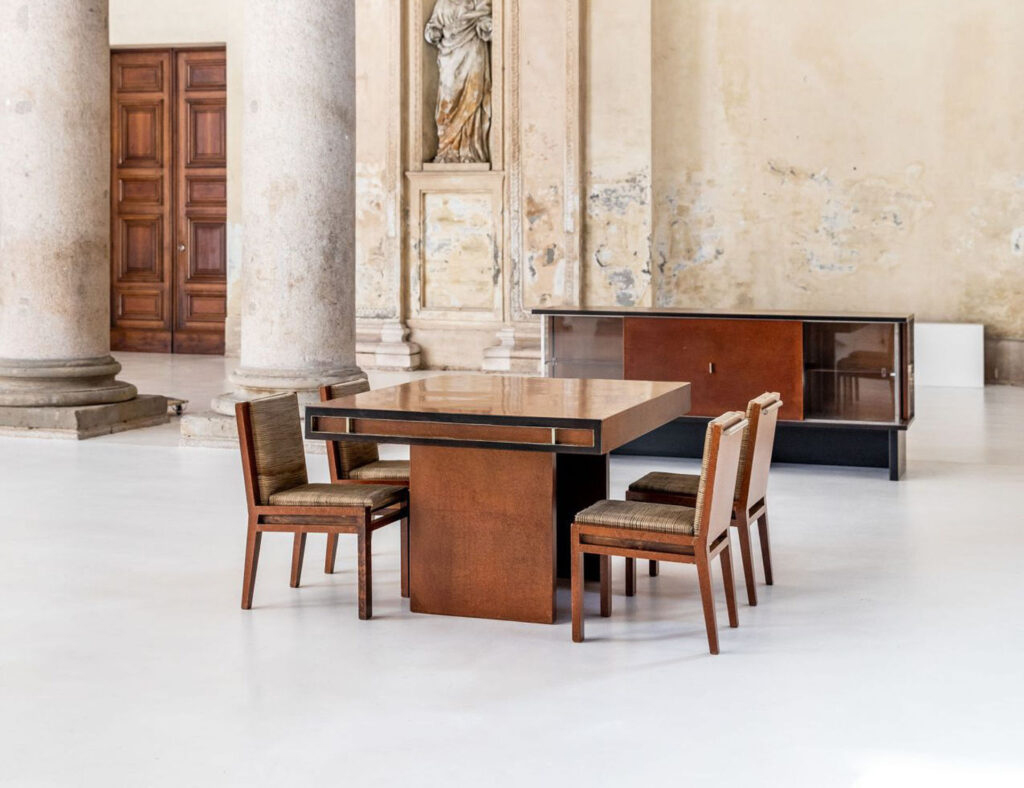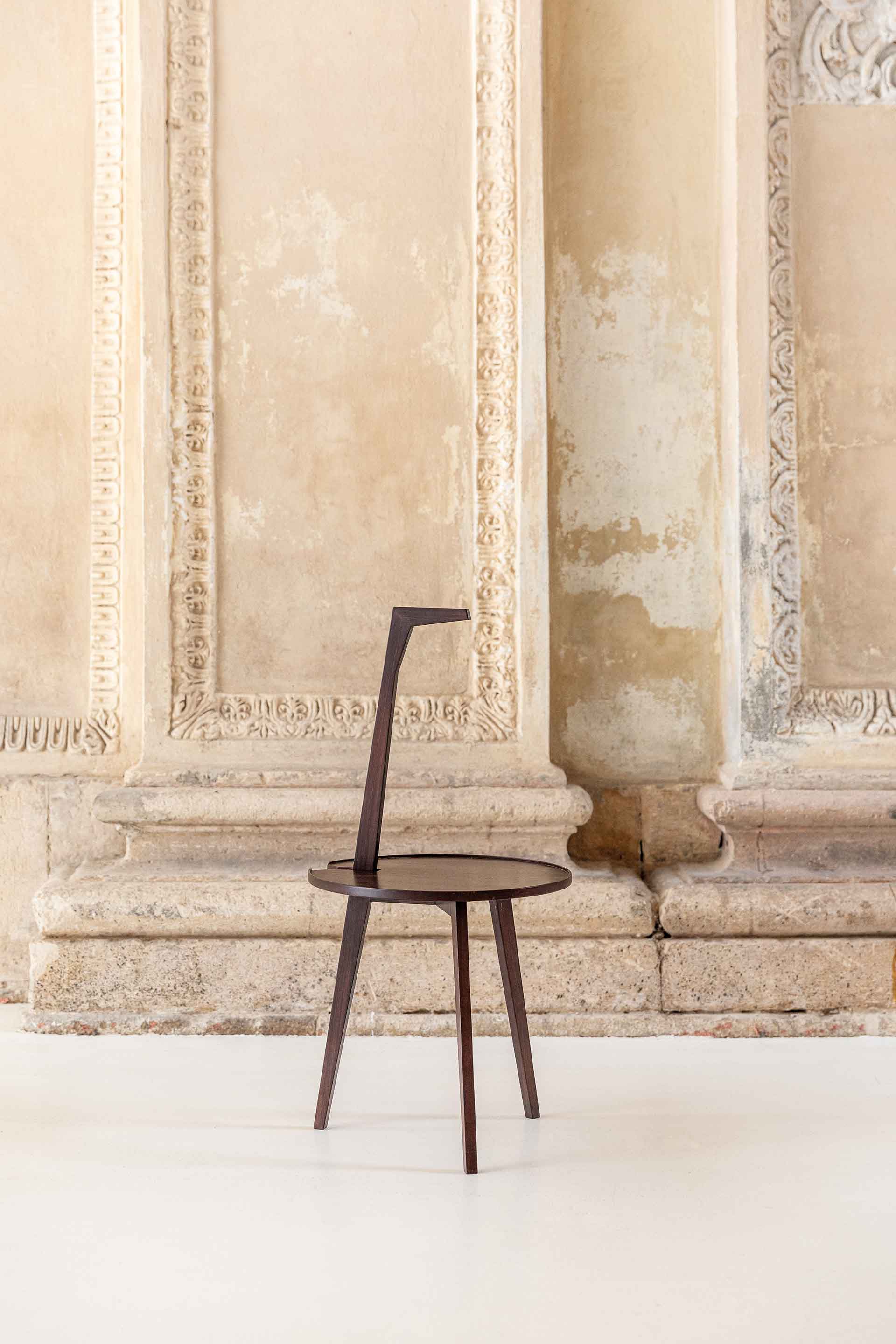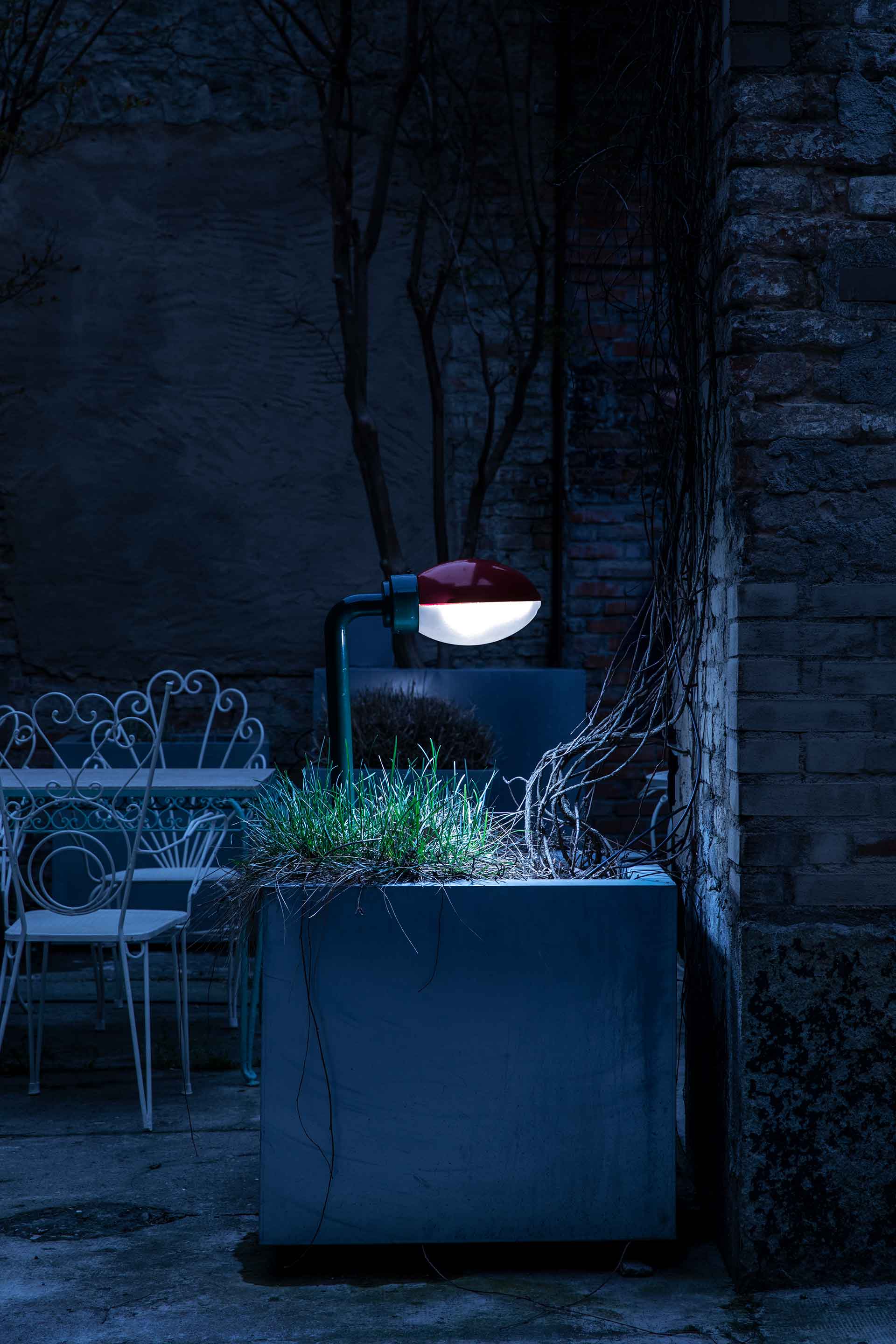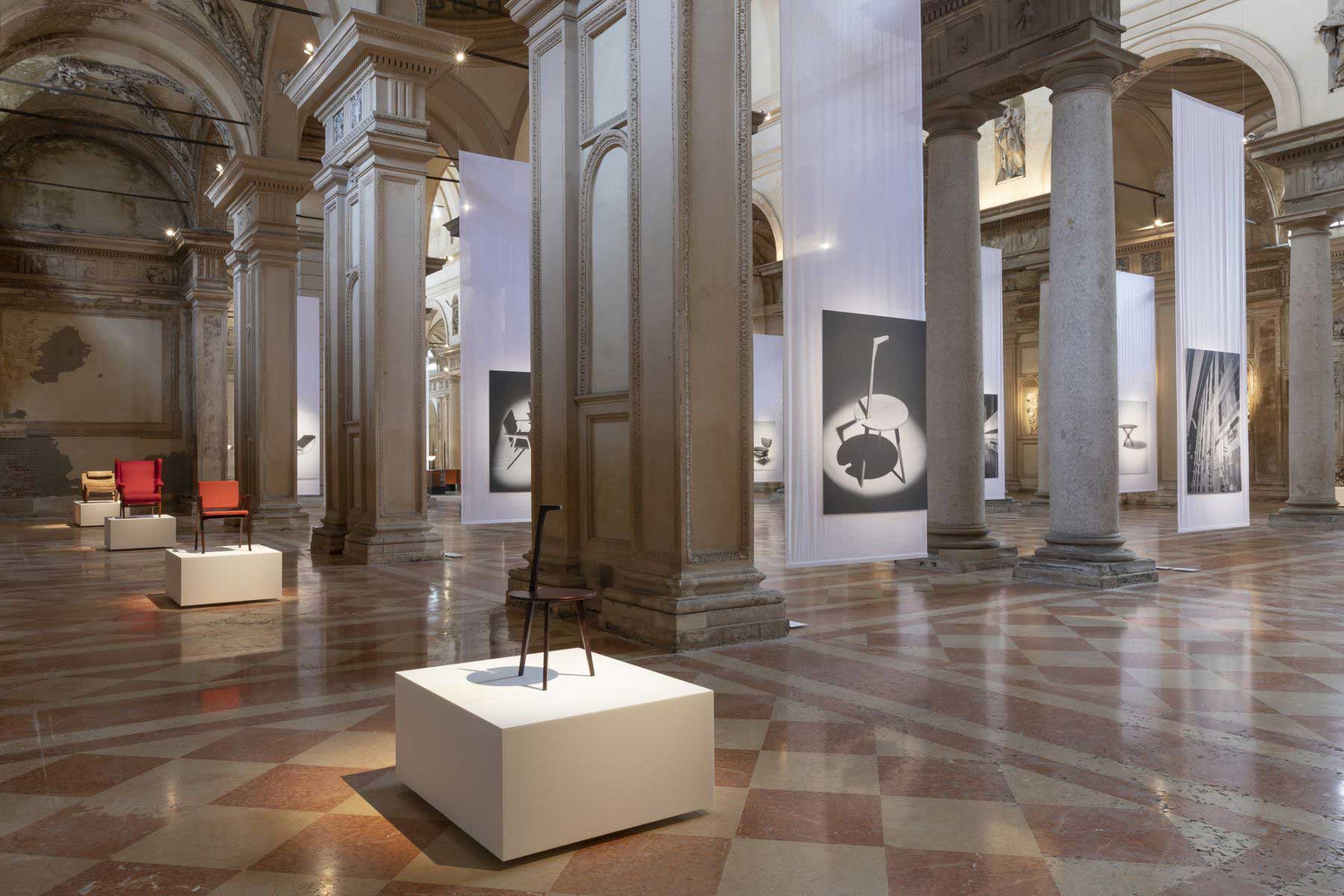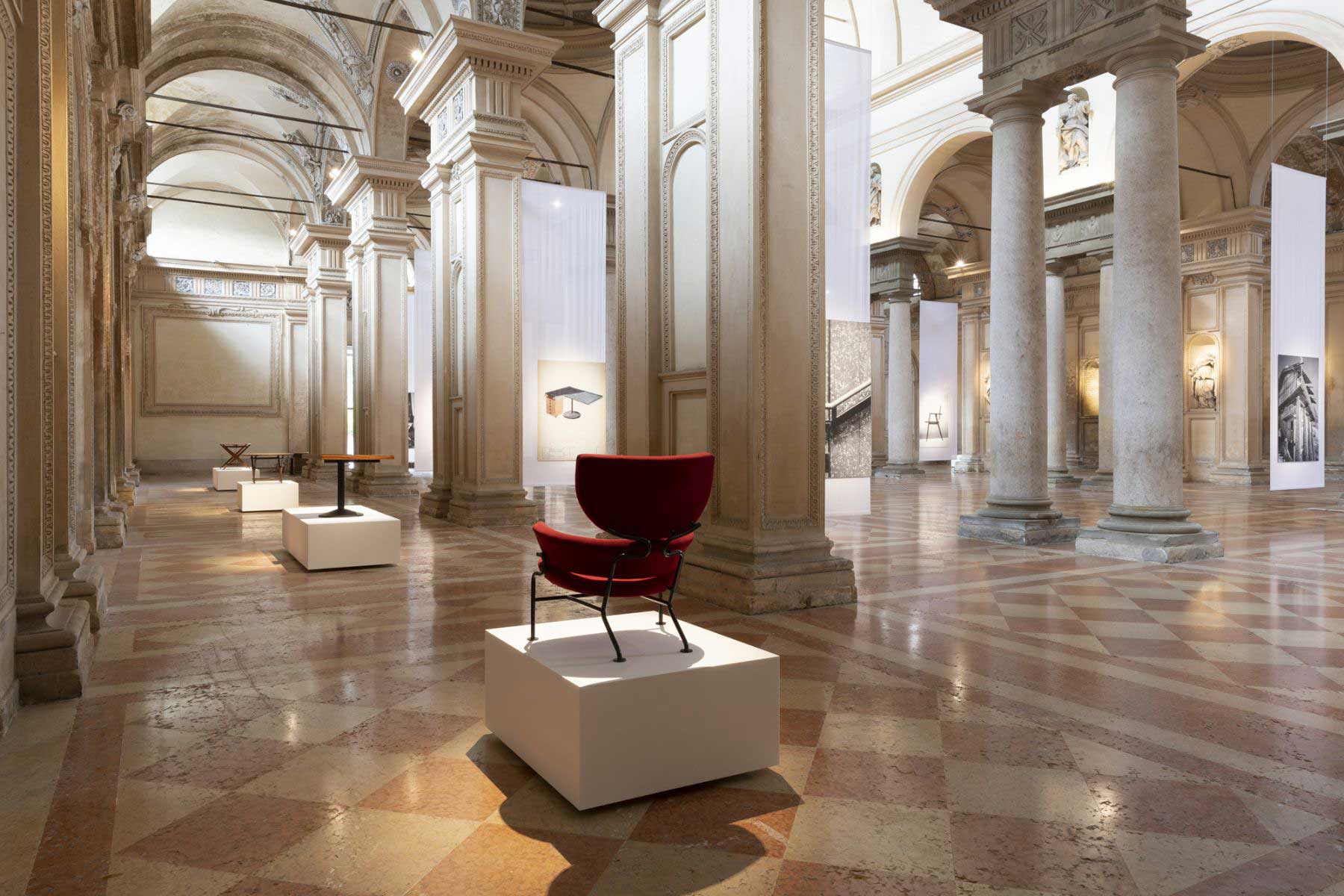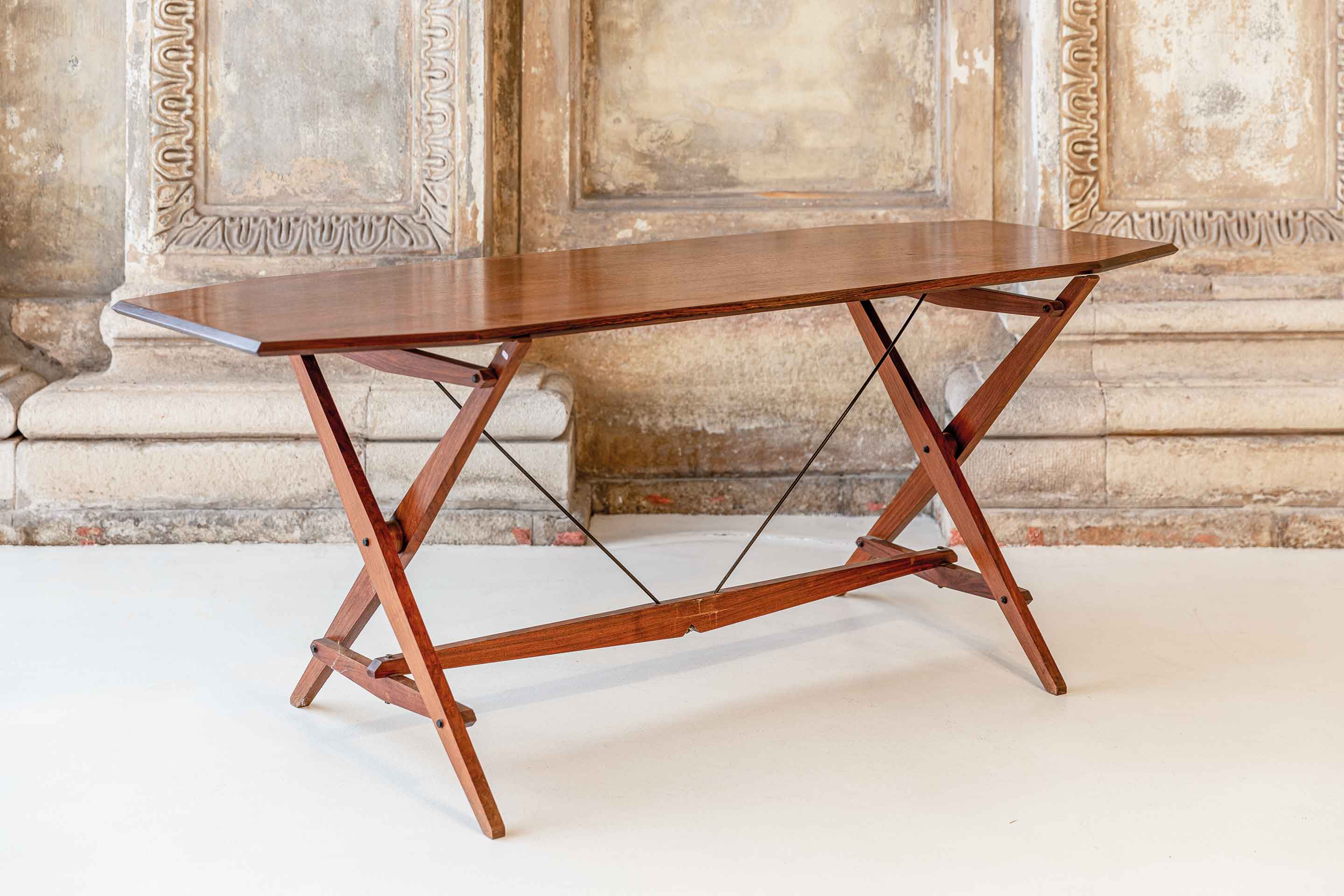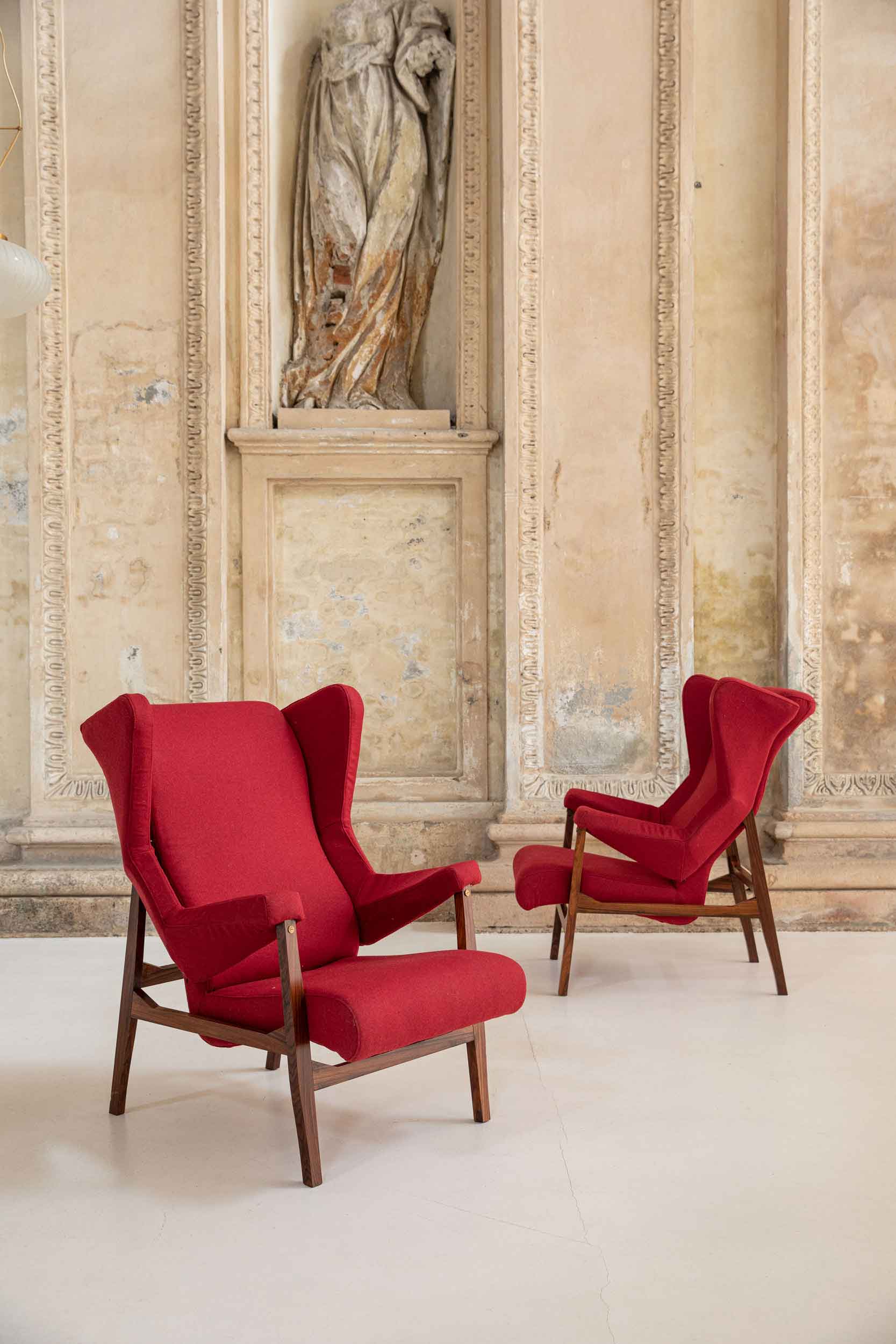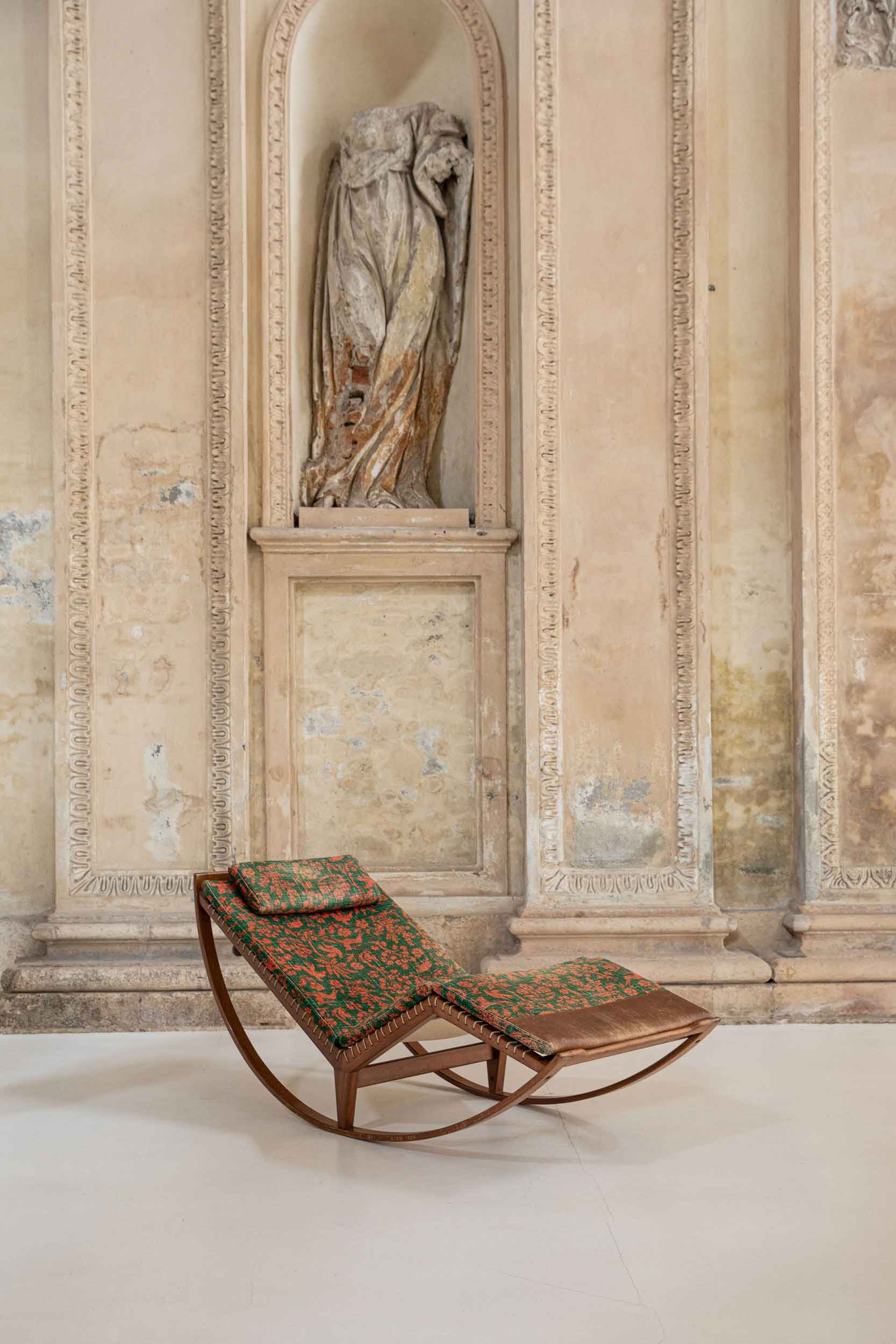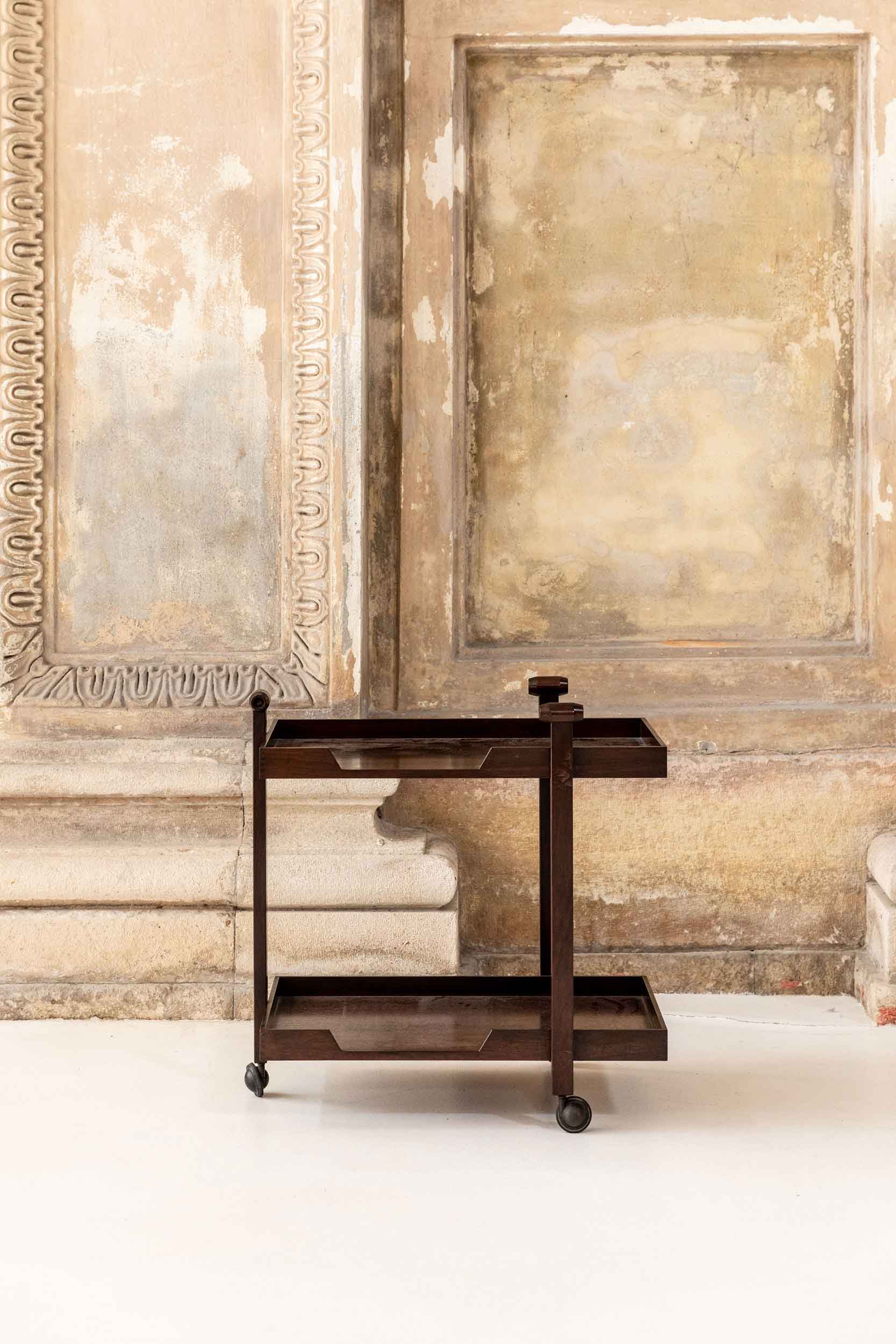In April, Volumnia, the exhibition space in the heart of Piacenza dedicated to art and design, opens the exhibition 'Franco Albini. Metodo e poesia': a retrospective dedicated to the Milanese architect and designer, curated by Stefano Andrea Poli.
The exhibition project draws on an iconographic framework provided by the Fondazione Franco Albini, thanks to whom specific archival research was carried out.
The layout is designed by Studio Albini Associati based on the evocative architectural space of the former church of Sant’Agostino, punctuating the exhibition path with a series of vertical panels providing information on both sides, as well as a series of displays dedicated to his furniture.
The lighting, created especially by Davide Groppi, enhances the peculiarities of the works and the exhibition framework.
The exhibition intends to highlight aspects that link various areas of Franco Albini’s work, from his architectural planning to his furniture design. Indeed, Albini’s work appears to provide a balanced synthesis between analytical method, based on the study of technique and history, and persistent poetic afflatus.
Visitors first encounter an introductory section, which will host an in-depth study of the relationship between the architect and the territory of Piacenza.
The initial narrative section, featuring historical images from the archives of the Fondazione Franco Albini, will weave a visual dialogue between architecture, furnishings, and fittings, while a documentary video will illustrate Franco Albini’s approach to architecture and design.
The second part of the exhibition will lead visitors into the world of Franco Albini’s furniture through numerous historical pieces, most of which were produced by the Poggi factory, the historic carpentry workshop in Pavia with which the designer enjoyed a privileged and almost exclusive relationship from the 1950s. Among the furnishings, the Luisa armchair cannot be overlooked, awarded the Golden Compass in 1955 and subsequently reissued by Cassina.
In particular, the presence of a set of items from the 1930s from private collections, on public display here for the first time, provides the exhibition with an element of particular historical interest.
Matter, design, and poetry thus combine along an exhibition path that unfolds within a unique venue in terms of structure, history, and beauty.
Read more +
Read less -







 Sign in with email
Sign in with email


